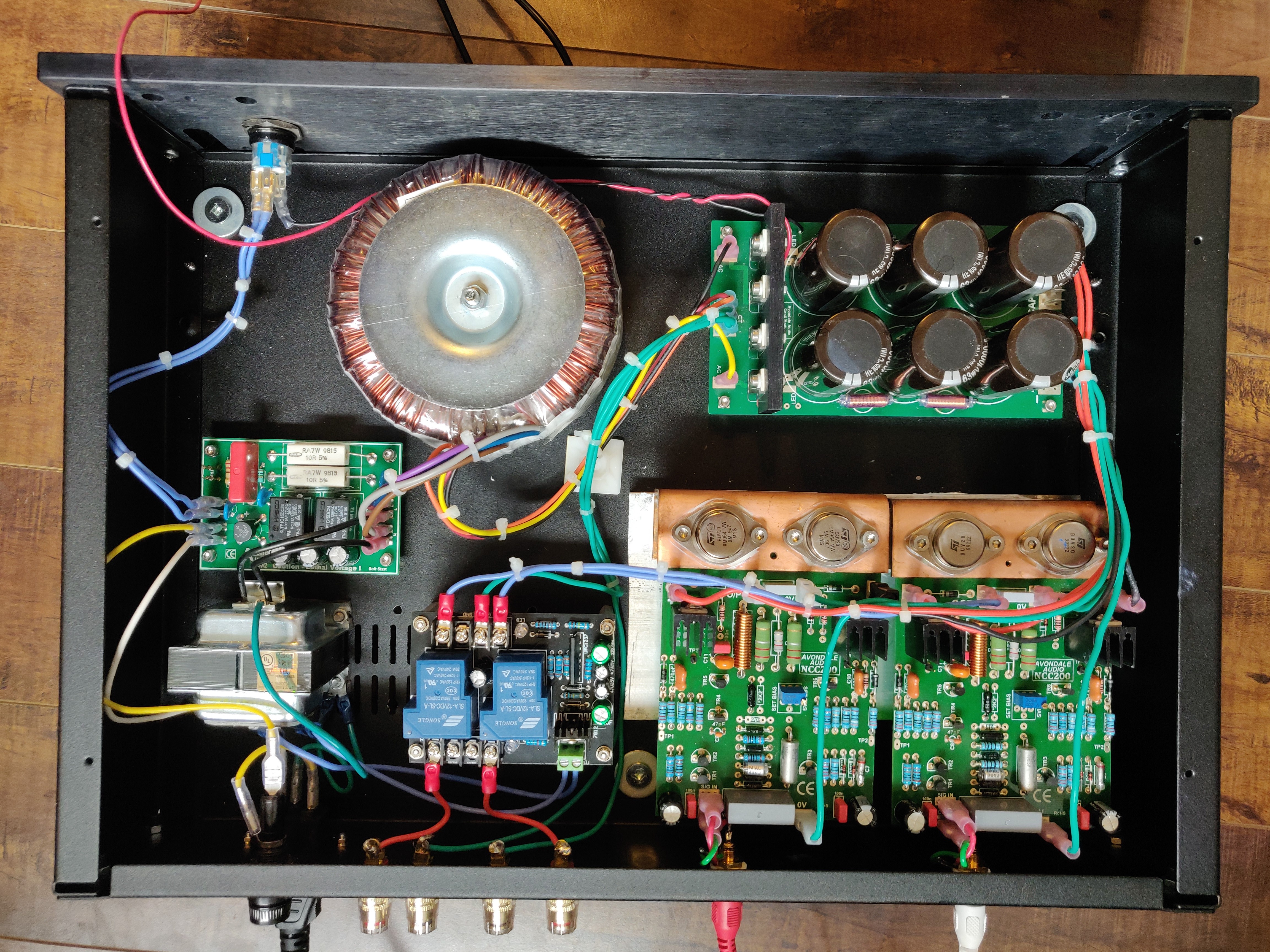Mike Hanson
Trying to understand...
I just remembered than when I ordered those two boards, I also ordered an alternate with relays from Songle rather than Omron. That one was substantially larger, so I set it aside and decided to proceed with the two smaller units. (It also meant that I could get used to using just one style.)
I just pulled it out and hooked it up to my amp. When I switched it on, as soon as the SSM2 gave it power, one LED lit up. A few seconds later the other LED lit and the relays clicked.
Therefore, it would appear that those two other UPC1237 modules are both duds. I'm not sure if I can do anything to revive them, or whether I should just go ahead and buy another of the Songle units from that same supplier.
I'm not sure if I can do anything to revive them, or whether I should just go ahead and buy another of the Songle units from that same supplier.
It also means I need to drill some new mounting holes. Any advice for how to do that without dismounting everything from inside, so I don't get metal shavings in nasty places? I should probably just bite the bullet and do it the right way.
I just pulled it out and hooked it up to my amp. When I switched it on, as soon as the SSM2 gave it power, one LED lit up. A few seconds later the other LED lit and the relays clicked.
Therefore, it would appear that those two other UPC1237 modules are both duds.
It also means I need to drill some new mounting holes. Any advice for how to do that without dismounting everything from inside, so I don't get metal shavings in nasty places? I should probably just bite the bullet and do it the right way.
This site contains affiliate links for which pink fish media may be compensated.


